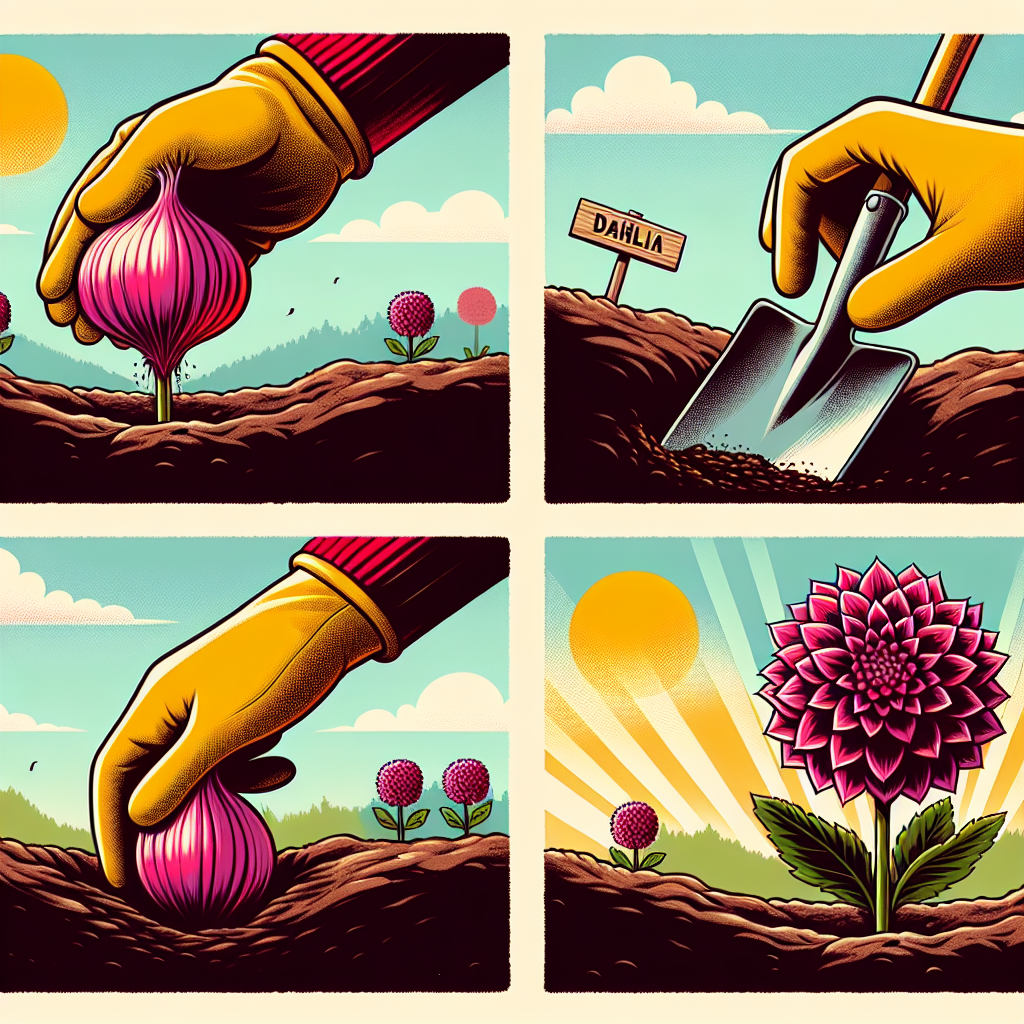
How to plant dahlia bulbs
Ultimate Guide on Planting Dahlia Bulbs
Dahlias are stunning flowers that bring a burst of color to any garden. Their vibrant blooms, which come in a variety of shapes and sizes, are adored by gardeners worldwide. Knowing how to plant dahlia bulbs is crucial for ensuring these beauties thrive in your garden. This guide will walk you through the steps, tips, and tricks for successfully planting and caring for dahlias.
Understanding Dahlia Bulbs
Before diving into the planting process, it's essential to understand what dahlia bulbs are. Also known as tubers, dahlias are fleshy storage organs that store nutrients to help the plant grow. Here are a few key points about dahlia bulbs:
- Variety: Dahlias come in numerous varieties, each with different blooming characteristics.
- Growth Habit: Depending on the type, dahlias can grow anywhere from 1 to 6 feet tall.
- Bloom Time: They typically bloom from mid-summer until the first frost.
When to Plant Dahlia Bulbs
Timing is key when it comes to planting dahlias. Here's what you need to know:
- Spring Planting: Ideally, you should plant dahlia bulbs in the spring after the risk of frost has passed. This usually falls between late April and early June, depending on your climate.
- Soil Temperature: Ensure that the soil temperature is consistently above 60°F (15°C) for optimal growth.
Choosing the Right Location
Dahlias require certain environmental conditions to thrive. Here’s what to consider when selecting a spot in your garden:
- Sunlight: Dahlias love sun and should ideally receive at least 6 to 8 hours of direct sunlight each day.
- Space: Ensure adequate spacing between the plants to allow for their vigorous growth.
- Drainage: Choose a well-draining site; dahlias do not do well in waterlogged soil.
Preparing the Soil
Well-prepared soil is the foundation of healthy dahlias. Follow these steps to prepare your garden bed:
- Testing the Soil: Conduct a soil test to understand its pH and nutrient levels. Dahlias prefer slightly acidic to neutral soil (pH 6.0 - 7.0).
- Amending the Soil: Enrich the soil with organic matter, such as compost or well-rotted manure, to provide essential nutrients.
- Tilling: Till the soil to a depth of 12-15 inches to improve aeration and drainage.
Planting Dahlia Bulbs
Now that you're ready, let's get into the steps of how to plant dahlia bulbs.
- Choosing Healthy Bulbs: Select firm, plump tubers with at least one "eye" or growth node (the point where the plant will sprout).
- Tilling the Ground: Ensure that the soil is loose and well-aerated. Create a hole that is approximately 4-6 inches deep.
- Placement: Place the dahlia tuber in the hole with the eye facing up. This is essential for proper growth.
- Spacing: If planting multiple dahlias, space them about 12 to 18 inches apart to allow for their mature size.
- Covering: Gently cover the bulb with soil, but avoid packing it down too firmly; dahlias prefer a loose environment.
- Watering: Water the area thoroughly after planting to help settle the soil, but avoid saturating it.
Caring for Your Dahlias
Once planted, dahlias require ongoing care to ensure they grow healthy and strong.
Watering
Proper watering is crucial for dahlias. Here’s how to manage it effectively:
- Water deeply once a week, allowing the top inch of soil to dry out between waterings.
- Avoid overhead watering to prevent fungal diseases; water the base of the plants instead.
Fertilizing
To promote lush growth and vibrant blooms, dahlias need fertilization. Consider the following:
- Type of Fertilizer: Use a balanced fertilizer or one formulated for flowering plants.
- Frequency: Fertilize every 4-6 weeks during the growing season, starting after they have established.
Pest and Disease Control
Your dahlias can attract pests such as aphids and slugs. Here are ways to manage these issues:
- Regular Inspection: Check your plants regularly for any signs of insect damage or disease.
- Natural Remedies: Use insecticidal soap or neem oil as a natural pesticide, and hand-pick larger pests.
Staking Dahlias
As they grow, dahlias may need support to prevent them from falling over. Here’s how to stake them:
- Choosing Stakes: Use sturdy bamboo stakes or metal supports that are at least 4-5 feet tall, depending on the dahlia variety.
- Tie the Stems: As the plants grow, gently tie the stems to the stakes using soft garden twine or fabric strips.
Harvesting Dahlia Tubers
At the end of the growing season, you may want to lift and store dahlia tubers for replanting in the next spring. Follow these steps:
- Timing: Wait until after the first frost kills the foliage, then cut the stems down to about 4-6 inches.
- Lift the Tubers: Carefully dig around the tubers with a spade or fork, avoiding damage to the tubers.
- Cleaning: Shake off excess soil and allow them to dry for a few hours. Store them in a cool, dark place in peat moss or vermiculite.
Enjoying Your Dahlias
Once your dahlias are blooming, you can enjoy their beauty in a variety of ways:
- Cut Flowers: Dahlias are perfect for bouquets; cut the stems early in the morning or late afternoon for best results.
- Photographic Opportunities: Their vibrant colors and unique shapes make dahlias ideal subjects for photography.
- Gardening Showcase: Consider entering your dahlias in local flower shows or competitions.
"Gardening adds years to your life and life to your years." - Unknown
Conclusion
Planting dahlias is a rewarding endeavor that can transform your garden into a spectacular floral display. By understanding how to plant dahlia bulbs, selecting the right conditions, and providing proper care, you can enjoy these gorgeous flowers for seasons to come. Happy gardening!
By Guest, Published on August 9th, 2024